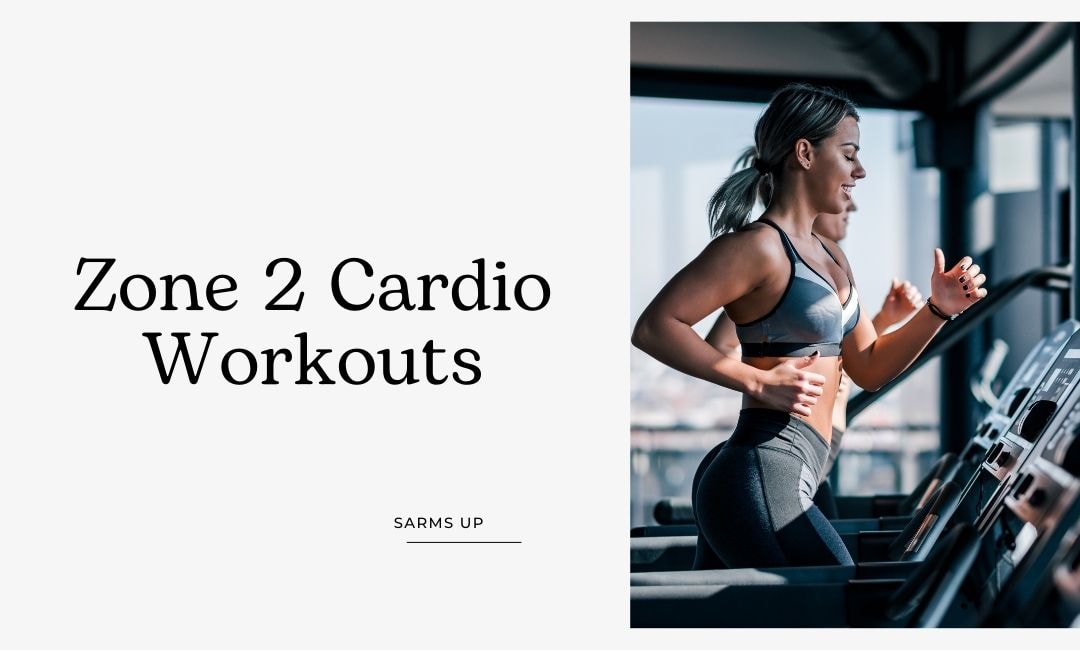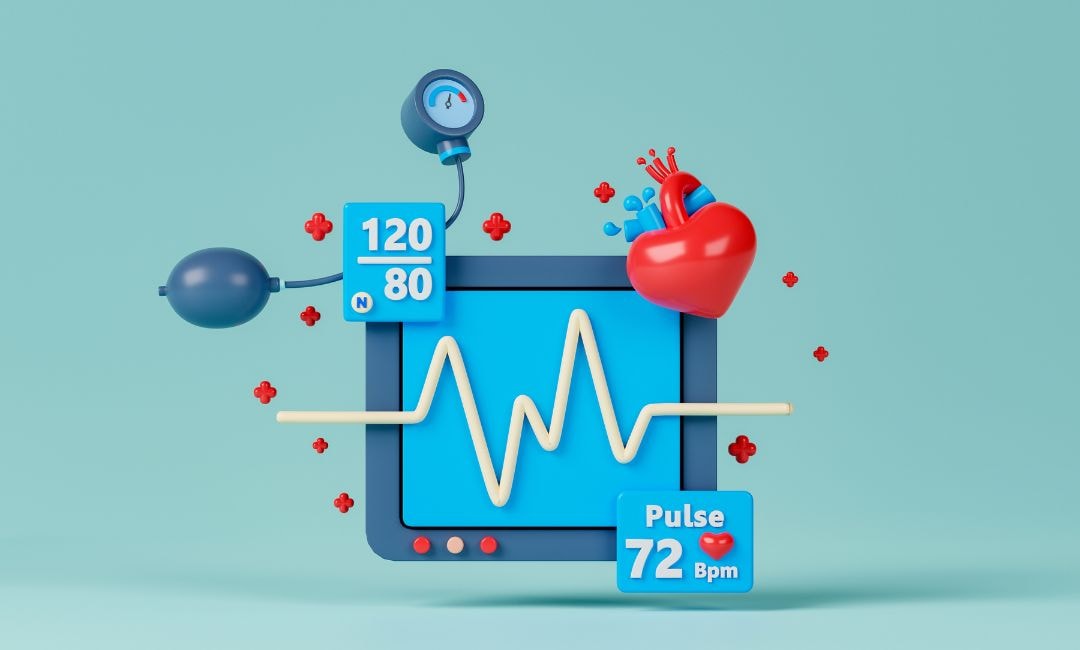Beginner's Guide to Zone 2 Cardio Workouts: Build a Strong Foundation for Fitness Routine

You work hard, but are you training smart? Many push their limits, believing more intensity always means better results. We show you how to build lasting fitness and a stronger heart without the constant grind. This guide cuts through the noise, revealing the quiet strength of zone 2 cardio.
Aerobic training, particularly in aerobic heart rate zones, enhances cardiovascular health and endurance performance. Medical professionals often prescribe aerobic training to improve heart function, and it is crucial for endurance athletes for fat loss and muscular endurance without significantly compromising strength gains.
Here’s what you’ll discover:
-
What is Zone 2 Cardio Training?
-
Why Zone 2 Cardio Training Is Important
-
How to Find Your Zone 2
-
Heart Rate Zones Explained
-
Does Zone 2 Cardio Burn Fat?
-
How Long and How Often to Train
To truly optimize your efforts and recovery, consider adding some extra support. Sarms UP offers quality solutions to help you push your boundaries and reach your goals.
What is Zone 2 Cardio Training?
Have you ever heard fitness pros talking about “Zone 2” and wondered what all the fuss was about? Simply put, zone 2 cardio means exercising at a moderate, steady intensity. It’s that sweet spot where your body primarily burns fat for fuel.
We define this intensity based on a percentage of your maximum heart rate. Think of it as a comfortable, steady pace. You aren’t gasping for air, but you’re definitely not just strolling either. Zone 2 training is particularly beneficial for improving overall cardio fitness. While Zone 1 training fosters blood flow without significantly enhancing cardio fitness, Zone 2 training is slightly more intense and easier to recover from, thus playing a more supportive role in boosting your cardiovascular health.
Understanding how different energy systems are activated during various cardio and strength training intensities is crucial. In Zone 2, the body primarily uses aerobic energy systems, which rely on oxygen to convert fat into energy, enhancing endurance and overall performance.
Pro Tip: Consistency beats intensity when it comes to Zone 2. Make it a regular part of your fitness routine.
Why Zone 2 Cardio Training Is Important

You might think pushing yourself to the absolute limit is the only way to get fitter. We often chase those high-intensity workouts, leaving us breathless and exhausted. However, there’s a powerful secret in the fitness world: Zone 2 cardio. This is where your body builds its foundation for true endurance and health.
Key Benefits You Get
Training in Zone 2 offers a cascade of benefits that build serious fitness:
-
Improved Mitochondrial Function: These tiny powerhouses in your cells multiply and become more efficient. Your body then excels at using fat for fuel.
-
Improved Fat Burning: Your body becomes a more efficient fat-burning machine, especially for longer efforts. This preserves your limited carbohydrate stores.
-
Increased Endurance and Stamina: You build a stronger aerobic base. This means you can sustain effort for longer periods without feeling fatigued.
-
Stronger Heart Health: Your heart muscle gets a workout, becoming more efficient. This can lead to a lower resting heart rate and better overall cardiovascular well-being.
-
Faster Recovery: Because it’s a lower intensity, Zone 2 training is less stressful. You can bounce back quicker from harder sessions, allowing for more consistent training.
-
Better Metabolic Health: Regular Zone 2 work helps regulate blood sugar and improve insulin sensitivity. This contributes to overall metabolic wellness.
-
Reduced Stress: The consistent, moderate effort can be a great way to unwind. It provides a gentle physical challenge without overwhelming your system.
-
Performance Benefits: Zone 2 training improves endurance, heart health, and overall oxygen utilization. This low-intensity training allows for longer workouts without burnout and enhances physical fitness, making it advantageous for both casual exercisers and endurance athletes.
Even elite athletes spend a huge portion of their training time in Zone 2. They understand that building a strong aerobic base is how you really go fast when it counts.
How to Find Your Zone 2
You already know Zone 2 cardio is a game-changer for your fitness. But how do you actually hit that sweet spot? Finding your precise Zone 2 involves a mix of simple tools and listening to your body’s signals. Accuracy matters here, so let’s break down the most effective ways.
Training intensity plays a crucial role in staying within Zone 2. While moderate intensity is beneficial for fat burning, it is important to manage your intensity levels to avoid drifting into higher zones that focus more on strength and muscle building.
Reliable Methods to Use
-
Heart Rate Monitor: This is your most direct measurement. Go for 60-70% of your maximum heart rate. While “220 minus your age” offers a general starting point, keep in mind it’s a rough estimate. Individual variations mean your true maximum heart rate might be different. For consistent tracking and more precise results, consider a reliable chest strap monitor or a quality sports watch.
-
The Talk Test: This method is easy, requiring no equipment. As you exercise, try to hold a conversation. If you can speak in full sentences, but find it just a little challenging to sing, you’re probably in Zone 2. If you’re completely out of breath, you’re too high. If you can easily belt out a song, you need to pick up the pace.
-
Rate of Perceived Exertion (RPE): The RPE scale helps you rate how hard you feel you are working, typically from 0 (no effort) to 10 (maximal effort). For Zone 2, you should aim for an RPE of 3-4. You should feel a steady effort, your breathing should be heavier than normal, and you might start to sweat, but you can sustain this for a long time.
-
Functional Threshold Power: Functional threshold power (FTP) is the highest average power you can sustain for one hour. It is crucial for cyclists to determine the appropriate intensity for Zone 2 training.
Using a combination of these methods gives you the best insight. Over time, your body will learn what Zone 2 feels like, even without a monitor.
Heart Rate Zones Explained

Understanding heart rate zones is like having a map for your fitness. Each zone represents a different intensity level, leading to specific physiological adaptations. Knowing these zones helps you tailor your workouts to your exact goals, whether you're building endurance, burning fat, or improving speed.
Here’s a quick look at the five common heart rate zones:
|
Zone |
% Max Heart Rate |
Purpose |
Feel |
|---|---|---|---|
|
Zone 1: Very Light |
50-60% |
Primarily for active recovery, warm-ups, and cool-downs. It helps with blood flow and preparing your muscles without much strain. |
Very easy, you can talk comfortably and breathe naturally. |
|
Zone 2: Light to Moderate |
60-70% |
This is your aerobic base builder. It improves mitochondrial function, boosts fat-burning efficiency, and builds long-lasting endurance. |
Sustainable effort, you can talk in full sentences, but feel a slight increase in breathing and effort. |
|
Zone 3: Moderate to Tempo |
70-80% |
Works your aerobic capacity and starts to push your lactate threshold. You can sustain higher intensities for longer durations. |
Challenging, conversation becomes difficult, you feel a steady, hard effort. |
|
Zone 4: Hard to Threshold |
80-90% |
Focuses on your anaerobic threshold. Training here improves your body's ability to tolerate and clear lactic acid, boosting your speed and power for shorter periods. |
Very hard, breathing is heavy, you can only speak in short phrases or single words. |
|
Zone 5: Maximal Effort |
90-100% |
Reserved for very short, all-out efforts. It aims to improve your VO2 max and anaerobic capacity. |
Extremely taxing, unsustainable, gasping for air. |
Understanding these zones means you can train smarter. You can deliberately choose an intensity that matches your session's objective. For those with fat loss goals from their Zone 2 work, combining your efforts with targeted supplements can be effective. Our Fat Burner Stack and Fast Burn Stack are popular options designed to support your body's natural fat-burning processes.
Does Zone 2 Cardio Burn Fat?
When you exercise in Zone 2, your body primarily uses fat for fuel. This intensity allows for ample oxygen delivery to your muscles, which is crucial for breaking down fat stores. Your mitochondria, those cellular energy factories, become more efficient at oxidizing fat, making your body a true fat-burning machine.
Compared to high-intensity interval training (HIIT), Zone 2 might burn fewer total calories per minute. However, a higher percentage of those calories comes directly from fat. More importantly, Zone 2 training is sustainable. You can comfortably maintain it for longer periods and more often, leading to a greater total amount of fat burned over weeks and months. High-intensity workouts can also spike cortisol, which can actually hinder fat loss if overdone. Zone 2 keeps things balanced.
Ultimately, consistent effort wins the race for fat loss. This steady, manageable pace trains your body's metabolic flexibility, making it better at switching between fuel sources.
Cardarine GW501516: A Fat-Burning SARM

Cardarine GW501516 activates the PPARδ pathway, which signals your body to use fat as a primary energy source. That means you burn more fat even while at rest, and it gets more noticeable when you’re active, especially during cardio.
Some users say it feels like they have an extra gear when training. It's been nicknamed "endurance in a bottle" because of the way it seems to keep fatigue at bay.
Fat Loss & Performance
This is where Cardarine really gets attention:
-
Increased fat oxidation – your body becomes more efficient at breaking down fat.
-
Improved endurance – longer, harder workouts = more calories burned.
-
Muscle-sparing – it doesn’t seem to cause muscle loss while cutting.
You’ll often see it stacked in cutting cycles because of these perks.
Creating a Zone 2 Cardio Plan
To create a Zone 2 cardio plan, it’s essential to determine your individual heart rate zones. This can be done by using a heart rate monitor or by estimating your maximum heart rate using the formula 220 minus your age.
Once you have determined your maximum heart rate, you can calculate your Zone 2 heart rate range, which is typically between 60-70% of your maximum heart rate. For example, if your maximum heart rate is 180 beats per minute, your Zone 2 heart rate range would be between 108-126 beats per minute.
When creating your Zone 2 cardio plan to combat any cardiovascular disease, consider your current aerobic fitness level, goals, and any health concerns. Start with manageable sessions and gradually increase the duration and intensity as your fitness improves.
How Long and How Often to Train
Once you understand what Zone 2 is and why it matters, the next question is: how much should you actually do? The key here is consistency and sustainability. You want to build a routine you can stick with.
For meaningful health and fitness benefits, aim for at least 150-300 minutes of Zone 2 cardio per week. This usually translates to about 2-3 sessions of 60-90 minutes, or 3-4 sessions of 45-60 minutes. If you're just starting out, don't worry about hitting these numbers right away.
Ready to Support Your Zone 2 Journey with Sarms UP?
You now understand the true value of Zone 2 cardio. It’s not about intense effort, but consistent, smart training for lasting fitness. Embrace this foundation, and you’ll gain incredible benefits for your endurance, heart health, and fat burning.
Zone 2 training is versatile and can be applied to a wide range of activities such as running, swimming, cycling, and even casual exercises like walking the dog. Any low-intensity cardio method can effectively contribute to developing an aerobic base, which is essential for improving overall performance and endurance.
Remember these key points:
-
Zone 2 is moderate intensity, primarily fat-burning.
-
It builds mitochondrial efficiency and aerobic endurance.
-
Find your Zone 2 using heart rate, talk test, or RPE.
-
Heart rate zones target specific fitness adaptations.
-
Zone 2 burns a high percentage of fat over time.
-
Aim for 150-300 minutes weekly, starting small and building up.
Building consistent Zone 2 habits can transform your body. To truly support your efforts in fat burning and endurance, Sarms UP offers valuable options. Consider our Cardarine or the Fat Burner and Fast Burn Stack to help you stay on track, making your Zone 2 journey more effective.
FAQs
What is the best cardio for Zone 2?
The best cardio for Zone 2 is any low-intensity or moderate-intensity aerobic activity that consistently allows you to maintain your Zone 2 heart rate. This means you can choose what you enjoy and stick with it. The training style of Zone 2 cardio is known for its long-term sustainability and effectiveness, making it easier to maintain consistent workout habits and prevent burnout.
Common options include a brisk walk, cycling, swimming, or elliptical training. The key is finding a steady pace where you can talk without gasping. It’s about keeping your exercise intensity within that comfortable aerobic exercise range.
How long should Zone 2 cardio be?
For real health benefits and to build significant aerobic capacity, we recommend aiming for zone 2 cardio sessions of 30 to 60 minutes. Maintaining low-intensity exercise for longer durations can enhance cardiovascular health, improve mitochondrial function for fat utilization, and provide a lower-impact workout option that aids in reducing stress and anxiety through the release of endorphins.
Many endurance athletes’ training routines even suggest going longer, up to 90 minutes or more, to really build a solid aerobic foundation. Try to fit 2-4 of these aerobic workout sessions into your weekly exercise routine. Consistency always beats the occasional long session.
Can you lose weight with Zone 2 cardio?
Absolutely, yes, you can lose weight with zone 2 cardio. This is truly your fat-burning zone. Your body becomes highly efficient at using body fat for fuel, which helps burn fat over time. While high-intensity exercise or more intense exercise might burn more total calories in a shorter burst.
Zone 2 training is particularly effective for losing weight as it allows for longer, sustainable sessions that maximize fat burning. Low-intensity cardio in Zone 2 is sustainable for longer durations, leading to a greater total fat loss and improved body composition. It also supports your metabolic health without the added stress of higher-intensity sessions.
How do I know my Zone 2 cardio?
Knowing your zone 2 cardio is straightforward. We rely on a few key methods. The talk test is super practical: you should be able to hold a conversation, speaking in full sentences, but not sing comfortably. You can also use a heart rate monitor or fitness tracker.
It's important to stay within the upper limit of Zone 2 for effective training, as exceeding this limit can reduce the benefits of your workout. Target 60-70% of your maximum heart rate (your max heart rate). Finally, consider your perceived exertion. On a scale of 0-10, your exercise intensity should feel like a 3-4, a comfortable but steady effort. This helps you stay within the upper and lower boundaries of the zone.

